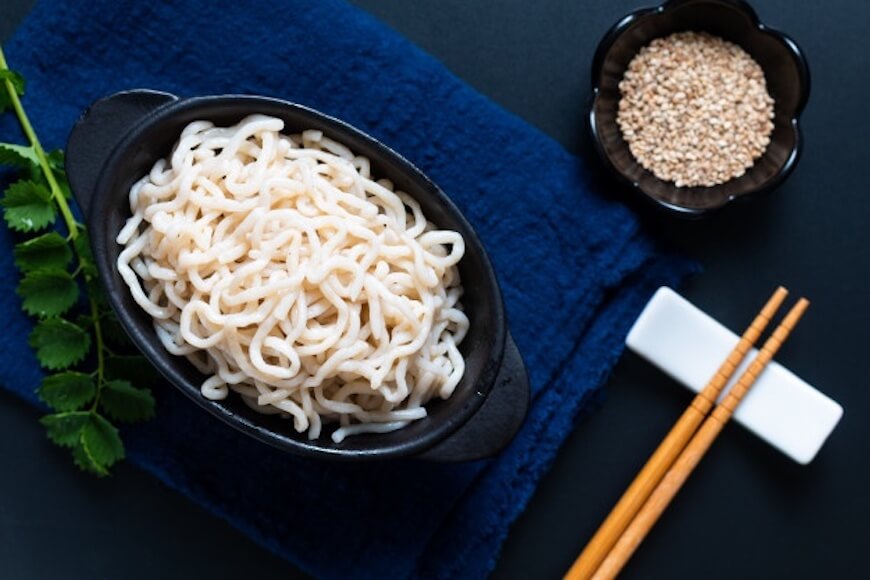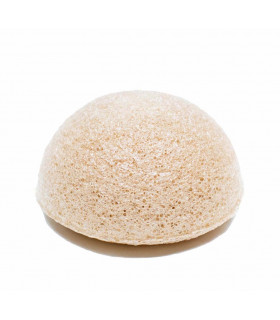What is Konjac and how is it beneficial ?
Also called devil's tongue because of its special shape and red color, konjac is a plant popular for its multiple benefits. It is indeed known for its nutritional values and is one of the slimming diets in herbal medicine in Western countries. Here we reveal everything you need to know about this plant and its properties..
What is Konjac ?
Konjac is a plant originating from South East Asia and popular for its therapeutic properties. From its scientific names amorphophalus konjac or amorphophallus rivieri, this vegetable belongs to the Araceae family. It is also referred to as the devil's tongue or shirataki.
It usually grows in South Korea, Indonesia, China, Thailand, Cambodia, Japan, the Philippines or in the forest in Vietnam. It only produces a large green leaf with purplish tints. It can reach a height of 1.3 meters.
Its appearance dates back to the 18th century in Japan where it was used for medicinal purposes and in local cuisine. The Chinese pharmacopoeia also recommends konjac for the treatment of several health disorders such as coughs, hernias, asthma or burns. The roots present in its underground part are dried before being crushed to obtain konjac flour or konnyaku.

Nowadays, this root is especially recommended by Asians for its hypoglycemic, digestive and detoxifying properties. It occupies a prominent place in European herbal medicine because of its appetite suppressant action. Its roots contain glucomannan, a water-soluble fiber that contributes to weight loss.
Although growing in popularity, this plant product is mainly produced in Japan and China. The Planetoscope site estimates the annual world production of konnyaku at 25,000 tonnes, or 0.8 kilograms per second.
What are the benefits of Konjac?
Konjac has been popular in Europe since 1990 because of its slimming effect. However, this vegetable also has countless properties and is incredibly effective on many body care products.
An effective appetite suppressant
If konnyaku has established itself in Western countries today, it is because of its thinness. It owes this reputation to glucomannan, a fiber that contributes to weight loss and the fight against obesity. When ingested with a meal, this viscous substance fills the stomach and makes you feel full. Konjac is therefore recommended if you want to avoid snacking and limit the feeling of hunger to reduce your appetite.
Note that it contains 70% fiber and 30% water, so it is less caloric than a salad. It has less than 10 calories per 100 grams and can absorb a lot of water - 100 times its size. In addition, glucomannan considerably slows down the absorption of sugar and slows down digestion. A study carried out in 2003 found that 4 grams of this substance is enough to halve the blood sugar peak. This action is all the more important when we know that the accumulation of fat is due to this increase in blood sugar.
Apart from its appetite suppressant properties, Konjac has an important slimming property. This is confirmed by a study based on a glucomannan supplement in overweight people. This supplementation resulted in a decrease in fat levels, body fat and weight in the subjects.
The medicinal virtues of Konjac
The fibers contained in Konjac are not only used to reduce weight but also the level of "bad cholesterol". Research published in the American Journal of Nutrition in 1995 actually consisted of adding 3.9 grams of glucomannan to the daily diet of 70 men. This resulted in a 10% decrease in the percentage of total cholesterol and 7% in the level of bad cholesterol (LDL cholesterol).
In addition, glucomannan has been shown to be involved in the delivery of cholesterol, thereby reducing its accumulation in the arteries. Including a supplement based on this substance in a diet therefore helps prevent cardiovascular disorders.
Konjac and its benefits against constipation
Like all fiber, glucomannan deserves its place in an anti-constipation diet. It fights against digestive disorders, improves intestinal transit, thus increasing the volume of feces. The laxative effect of this herb is perfect for lightening the stomach, preventing constipation and relieving stomach aches.
In addition, the high fiber content of Konjac gives it an important detoxifying action. It helps eliminate toxins and wastes from the body while regulating digestion. It is a bandage for the digestive system that resolves irritation. The advantage of Konjac is the number of possible recipes. It is possible to obtain it in capsules, but also in the form of pasta, such as tagliatelle, thus making it possible to create spicy dishes pleasantly in the wok while having a slimming virtue. What feed his name of shirataki.
Although additional studies are underway to confirm it, researchers attribute to it a hypoglycemic property. Its action on gastric emptying would allow it to reduce the percentage of glucose in the blood. The results obtained from people with type 2 diabetes are already promising.
A natural and zero waste sponge
You should know that the plant is the main element that constitutes konjac sponges. These are environmentally friendly alternatives to synthetic sponges and disposable cottons that are harmful not only to the skin but also to the environment. This natural sponge is in fact entirely biodegradable and compostable.
The vegetable konjac sponge is obtained from a mixture of water and powder obtained after grinding the Konjac roots. The whole thing is finally passed in the oven to constitute the ecological parade of sponges made from petrochemical ingredients.
To target its action on problematic skin, the Konjac natural sponge is added to the initial preparation of natural charcoal and clays of various kinds, a way to amplify its effectiveness. The vegetable fibers of this sponge justify its versatility:
- It helps remove makeup and deep cleanse
- It promotes blood circulation, thus accentuating cell regeneration
- It limits the proliferation of bacteria that are sources of acne pimples and blackheads on the face
- It delicately exfoliates the skin, frees the pores of the epidermis

What are the precautions for using Konjac?
If you are using it for a cure, be sure to observe certain precautions to avoid unpleasant results. Excessive consumption of Konjac can cause gas, bloating or loose stools.
It is contraindicated for a child to ingest it in large quantities because of the small stomach of the latter. As such, it should be remembered that Konjac was the source of a scandal in the 2000s when it was consumed in the form of gelatin candy resulting in deaths. Under the action of saliva, these sweets swelled in the esophagus or throat to cause suffocation. Since March 27, 2002, confectionery based on this substance has been banned.
If you are undergoing medical treatment, please seek the advice of your doctor first. Before any consumption as a supplement, be sure to observe the following instructions:
- Drink a large glass of water
- Shorten the time of your cure
- Follow the dosing instructions
It is generally recommended to wait 2 to 3 hours after taking the drug. The active ingredients of the latter may be altered by the action of the plant. If you are taking drugs with a hypoglycemic effect, rationalize its use. Combination with the medicine may cause your blood sugar to drop excessively.
Where to get konjac?
To take full advantage of its benefits, opt for a quality konjac sponge. Some manufacturers use controversial substances in the manufacture of the product. In addition, many traders carry out irradiation, this approach alters its properties.
Choose a konjac with the appearance of a capsule and titrated to 90% glucomannan. This form is the most efficient because the active molecule of Konjac is concentrated there.
If you want to incorporate it into your slimming diet, bet on a model that looks like rice or noodles. Note that they have no taste but can be delicious when combined with ingredients that you like.
For high-end konjac sponges, visit our natural sponges section!
What dosage is the righ amount?
Shirataki is an easy addition to any drink or culinary preparation. As for the proportion, use only a few grams per kilogram of preparation. Aspects of Konjac vary to suit any purpose. It can therefore be used in smoothies, desserts, meats, yogurts and many other dishes.
Beyond noodles and rice, konjac is also available in capsule form. The latter option is ideal for glucomannan intake. The appropriate amount is decided according to the desired results. The daily consumption of 4 grams of glucomannan is that recommended for diabetes control and cholesterol regulation. For weight loss, it is advisable to consume 2 to 4 grams per day.
It emerges from all this that the konjac has a thousand and one properties. It is not only part of a healthy diet but also one of the essentials of a zero waste beauty routine. Nevertheless, bet on quality and naturalness in order to really benefit from it.







